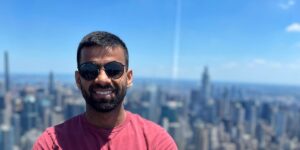- DeepMind is Google’s AI research hub focused on building artificial general intelligence.
- DeepMind has been applied to real-world problems in healthcare, science, and engineering.
- DeepMind has a number of competitors, including OpenAI, though Google’s model is for profit.
In the last few years, artificial intelligence has stepped out of the pages of science fiction and into everyday life.
Today, we’re surrounded by AI systems like Gemini, ChatGPT, Dall-E, CoPilot, and countless others, but Google DeepMind is somewhat different.
Launched back in 2010, DeepMind is a company with the goal of developing an artificial general intelligence, often referred to as AGI.
What does Google’s DeepMind do?
While many AI systems in use today are very good at completing specific kinds of tasks for which they were trained, the goal of AGI is to build a human-like intelligence that can learn, reason, and problem-solve a wide range of topics and tasks across a plethora of domains.
In other words, it’s designed to mimic human intelligence.
This is different from systems like ChatGPT and Google Gemini, which are narrow AI systems that are very good at the specific task of understanding natural language well enough to deliver useful information through human-like interactions.
Of course, DeepMind has not yet achieved AGI, but has made impressive achievements nonetheless. In practice, DeepMind has been applied to solving real-world problems in healthcare, science and engineering. It’s perhaps most famous, though, for its mastery of enormously challenging games.
In 2015, for example, DeepMind’s AlphaGo became the first computer program to ever defeat a human opponent at Go (a game considered far more complex than chess). Less than two years later, AlphaGo went on to defeat the top-ranked Go player in the world.
Who runs Google’s DeepMind?
DeepMind was created in 2010 by a trio of computer engineers from the Gatsby Computational Neuroscience Unit at University College London, and early research focused on getting AI systems to learn to play games without any instruction — the software would learn games like Breakout, Pong and Space Invaders through trial and error, eventually mastering the rules and becoming an expert at the games.
Google acquired DeepMind in 2014 for a price somewhere between $400 million and $650 million. Today, the company remains a part of Google’s Alphabet portfolio of businesses where Demis Hassabis, one of DeepMinds three original founders, continues to lead the development of AGI as CEO.
In April 2023, Google CEO Sundar Pichai announced that Google would merge DeepMind with the Brain team from Google Research to create a single AI unit — named Google DeepMind — to “help us build more capable systems more safely and responsibly.”
Google DeepMind remains based in London primarily, but also has researchers in Montreal, Canada, and at the Googleplex corporate headquarters in Mountain View, California.
What’s the difference between DeepMind and OpenAI?
Of course, DeepMind is hardly alone in its AI research and development; it has a number of competitors, including the headline-making OpenAI.
These two companies take a very different approach to AI development, though. DeepMind is a for-profit part of Google’s Alphabet, Inc., for example, while OpenAI was originally established as a non-profit, before transitioning to a “capped-profit” model.
The two companies have developed AI models and applications in ways that have contributed to AI research in sometimes complementary ways. While DeepMind mastered Go with AlphaGo, for example, OpenAI developed Generative Pre-trained Transformer language models (for example, ChatGPT) that allow machines to better understand natural language, for more interactive and immersive experiences.
Do you need a PhD to work at DeepMind?
Given the deep complexity of what DeepMind is developing, one might assume that prospective employees might all require a PhD. In reality, though, that’s not true. Google hires a large number of researchers and computer engineers with lesser degrees to help advance the state of the art in artificial intelligence.
Read the full article here
















